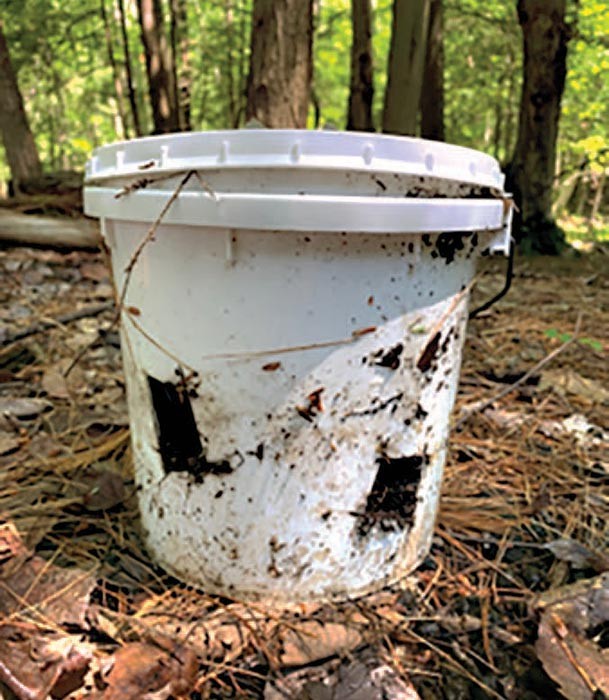
For as long as the blacklegged tick has been expanding its range in the Northeast, many have thought that cold winters limit its geographic range. This belief in part derived from laboratory studies that showed ticks died when exposed to temperatures below 14 degrees Fahrenheit for as little as two hours. But later experiments in the field showed inconsistent results. Getting a better grasp on what is influencing tick populations from year to year and constraining their distribution are major concerns for public health, as ticks carry diseases including Lyme, anaplasmosis, and babesiosis.
A University of Maine research team led by Allie Gardner and Michelle Volk studied the survival of nymph-stage blacklegged ticks in parts of Maine where they already are established and where they continue to be largely undetectable. The researchers established experimental enclosures with a known number of nymphs in mixed oak-maple-birch-pine forests that span the state’s broad range of winter conditions, from Cape Elizabeth to Presque Isle.
After two years, they found that blacklegged ticks survived through the winter at all sites, even in northern Maine, where ticks generally are absent (the researchers checked for tick presence or absence by surveying for ticks outside the experimental areas). The researchers attributed this result to a sufficient amount of snow that protected ticks against exposure to extremely low temperatures in the north. Ticks also were more likely to survive at all sites if the ticks were covered with leaf litter.
They concluded that something besides cold temperatures must be limiting tick distribution in central and northern Maine, such as deer abundance or forest habitat. Or it could be that winter is harsher on other life stages. “We don’t have a holistic understanding of how the tick life cycle is affected by climate and weather,” said Gardner, one of the authors of the study published in the journal Ticks and Tick-borne Diseases. The research team is now trying to understand how ticks are affected by month-to-month variability and sudden changes in temperature and precipitation.

